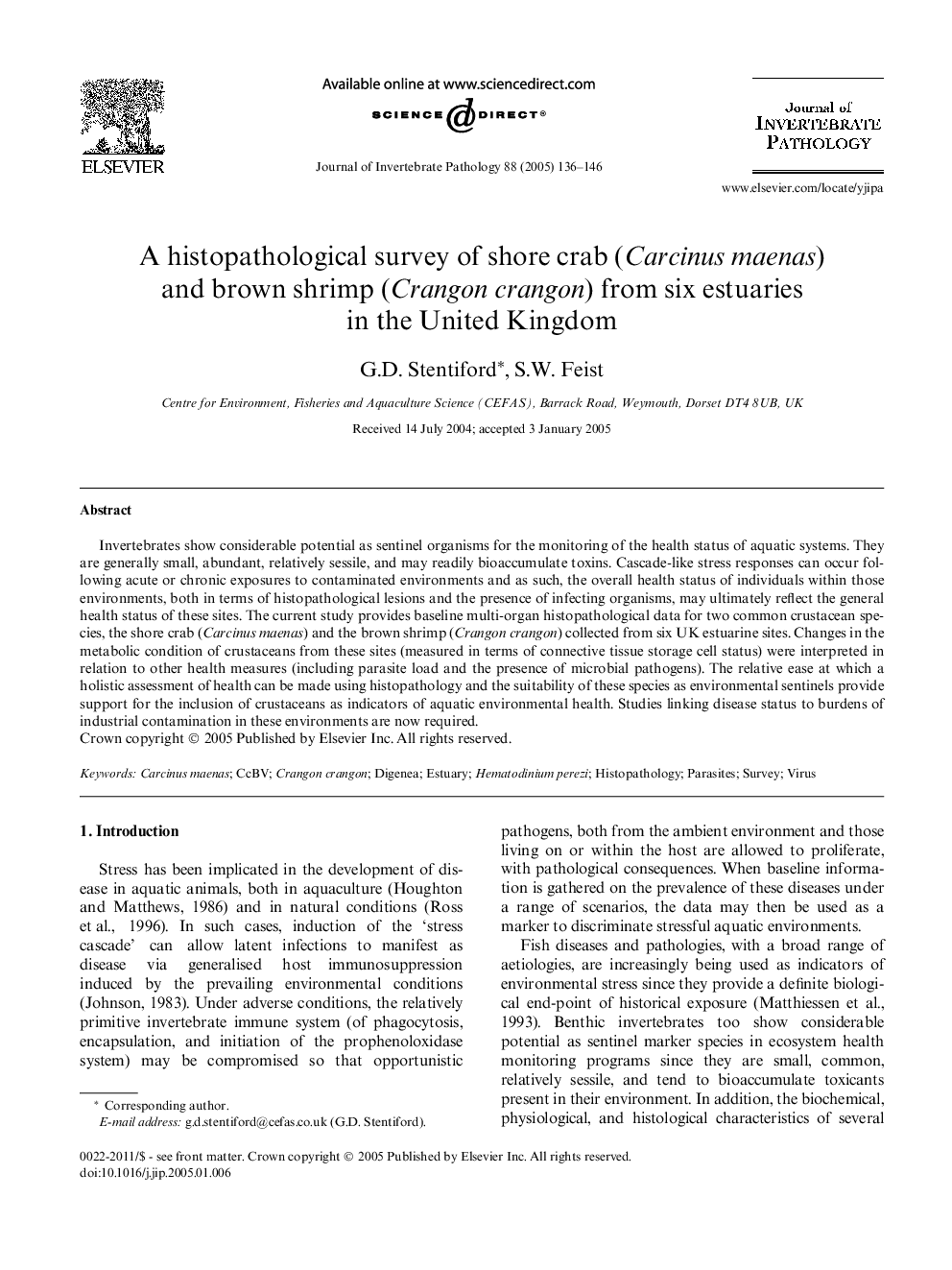| Article ID | Journal | Published Year | Pages | File Type |
|---|---|---|---|---|
| 9486619 | Journal of Invertebrate Pathology | 2005 | 11 Pages |
Abstract
Invertebrates show considerable potential as sentinel organisms for the monitoring of the health status of aquatic systems. They are generally small, abundant, relatively sessile, and may readily bioaccumulate toxins. Cascade-like stress responses can occur following acute or chronic exposures to contaminated environments and as such, the overall health status of individuals within those environments, both in terms of histopathological lesions and the presence of infecting organisms, may ultimately reflect the general health status of these sites. The current study provides baseline multi-organ histopathological data for two common crustacean species, the shore crab (Carcinus maenas) and the brown shrimp (Crangon crangon) collected from six UK estuarine sites. Changes in the metabolic condition of crustaceans from these sites (measured in terms of connective tissue storage cell status) were interpreted in relation to other health measures (including parasite load and the presence of microbial pathogens). The relative ease at which a holistic assessment of health can be made using histopathology and the suitability of these species as environmental sentinels provide support for the inclusion of crustaceans as indicators of aquatic environmental health. Studies linking disease status to burdens of industrial contamination in these environments are now required.
Related Topics
Life Sciences
Agricultural and Biological Sciences
Ecology, Evolution, Behavior and Systematics
Authors
G.D. Stentiford, S.W. Feist,
